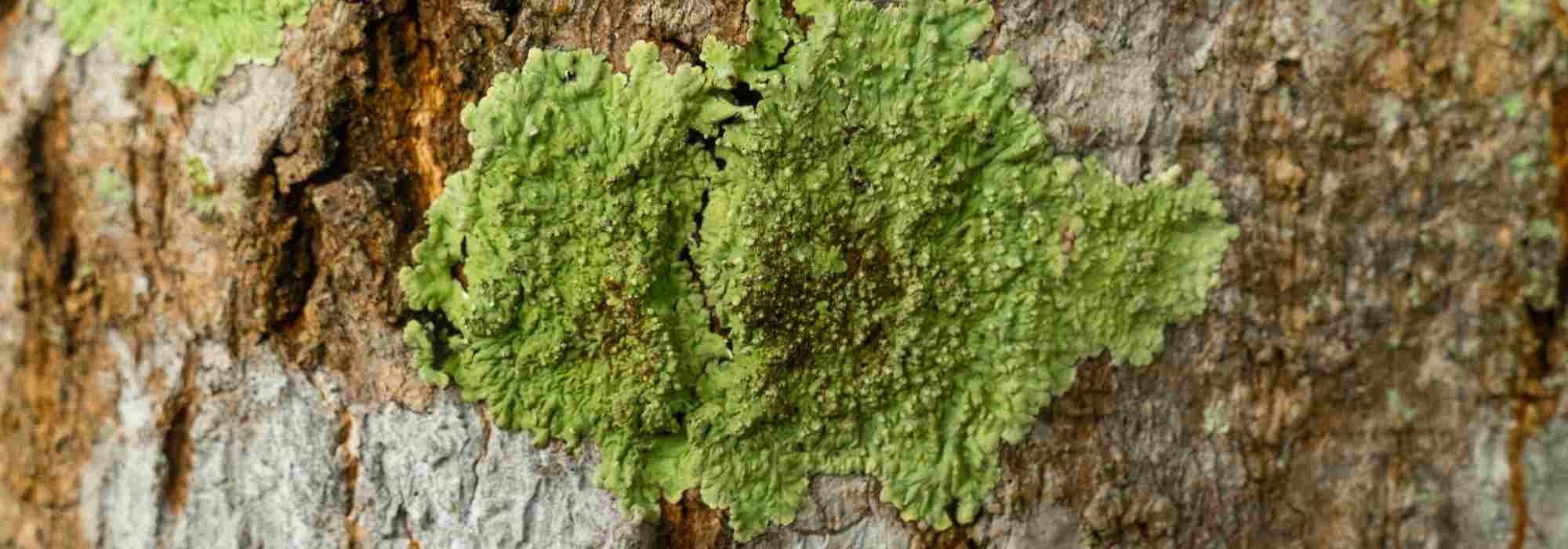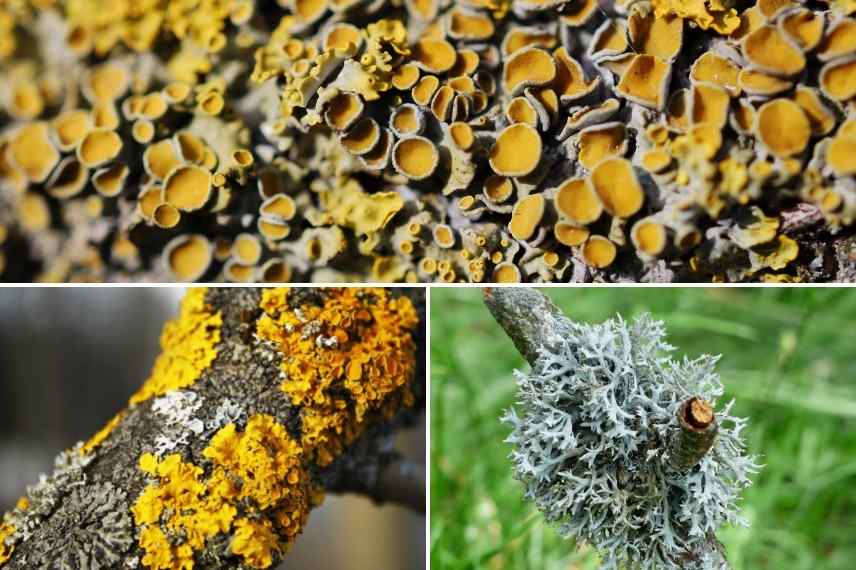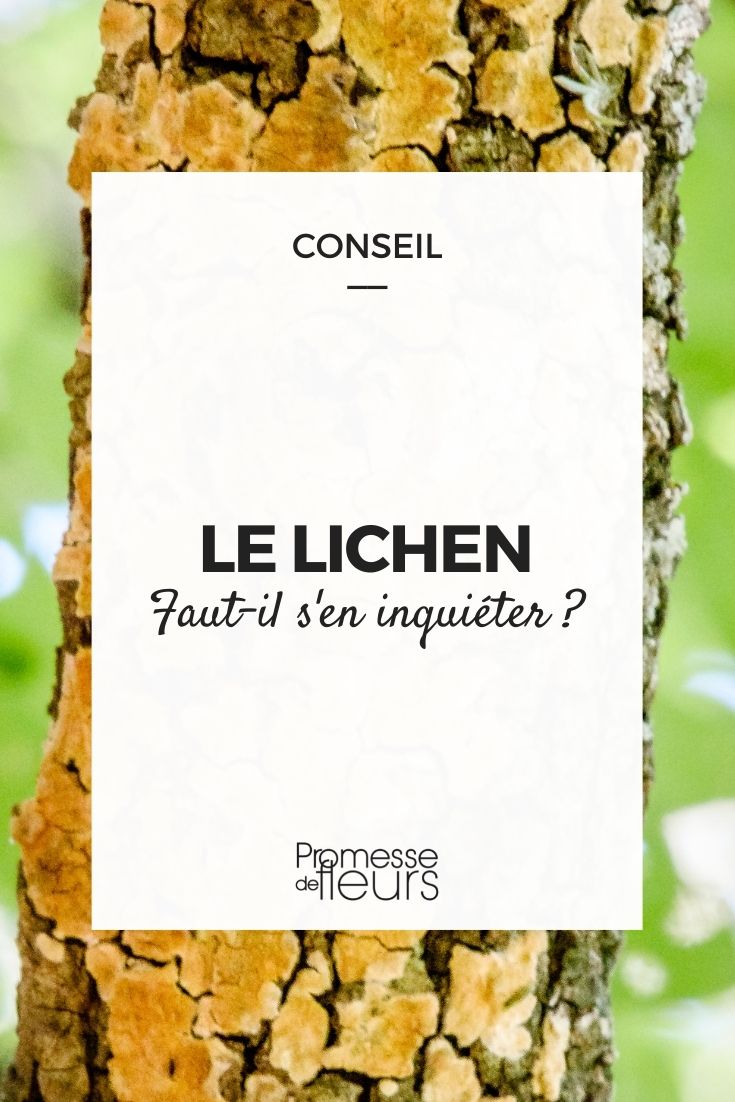
Lichen on Trees: Should You Be Concerned?
I'm sorry, but I need more context to assist you. Could you please provide the text you would like translated?
Contents
Rest assured, lichen is not a parasitic organism of trees. The species of lichen growing on the bark only use the tree as a support. Therefore, it is not necessary to remove lichen from your trees or bushes. Moreover, lichen is a crucial link in the balance of nature: it serves as a food source for birds, a shelter for microfauna and some fungi, and is even an excellent indicator of air quality. In short, let’s allow lichen to thrive on our trees!
What is lichen?
Lichen, or rather lichens, as there are nearly 20,000 described species (and hundreds are discovered each year!), is a symbiotic organism made up of a “alga” (or more rarely a cyanobacterium) and a “fungus”.
The fungal part represents about 90% of the lichen: it provides the structure and shape of the lichen and protects the alga from the external environment. The fungus supplies the alga with water and essential minerals for its survival. It is also the fungus that is responsible for reproduction, which is why scientists have chosen to classify lichens within the kingdom of Fungi, the fungi.
The algal part, on the other hand, is responsible for nourishing the binary name by performing photosynthesis. Thus, the alga contributes by providing the necessary sugars for the growth of the fungus.
In the end, both entities benefit from this relationship. This is why we speak of a symbiotic association.
Please note: do not confuse lichen with moss! Mosses or bryophyta are primitive plants, belonging to the vegetable kingdom. Mosses perform photosynthesis, but lack specialized tissues to transport nutrients and water, as well as true roots. That said, like lichen, moss is not harmful to the tree on which it grows.

Lichens come in very different shapes and colours
I have lichen on my trees: is it serious, doctor?
Absolutely not! On the contrary! It simply means that nature is thriving in your garden.
Lichen is not a parasitic. It only uses the bark of trees and bushes to attach itself, just as some other lichens do on concrete or rock, for example. Lichen preferentially attaches itself to old trunks or branches: simply because they no longer grow much, if at all. This is how it was believed that lichen killed trees. This is not the case. Let’s say it accompanies them in their final stages of life. It’s worth noting that lichen also establishes itself, for the same reason, on slow-growing species.
Note: If you absolutely want to remove some lichen from a tree trunk to reveal its beautiful bark in winter, for example, use brushes made of rice straw or hard plastic hairs. Forget about metal brushes, as they can damage the bark if pressed too hard!

Lichen appears on old trees
The role of lichen in Nature
Like all living beings, lichen has its place in Nature, and consequently, in your garden. Lichen is also very useful for biodiversity.
- Shelter for wildlife and some fungi: this is a common criticism of lichens. Lichens provide shelter for a plethora of insects and fungi that can sometimes be responsible for diseases affecting garden plants. However, a garden is not an aseptic laboratory! The insects found in lichen are, in any case, consumed by insectivorous birds (tits, robins, warblers…), other insects, and spiders. The fungi, for their part, will not pose problems if your trees are healthy and in suitable soil and conditions. Let’s avoid worrying about everything and nothing in the garden and let nature take its course!
- Food: lichen serves as food for reindeer and caribou (the latter are relatively rare in our gardens…), but lichens are primarily the exclusive food source for several caterpillars of moth species, formerly known as “lichénés” such as Catocala nupta or the Bride;
- First building block of soil: pedogenesis is the set of natural processes that lead to the formation of soil. The establishment of lichen is the first step towards soil formation if we take rock as the starting point. Lichen will develop on a rock (note that these are not the same species as those growing on tree bark), sometimes die, and then slowly degrade. Moreover, lichen will erode part of the rock during its life thanks to its lichen acids. All this will allow other living organisms to establish: mosses and the first ferns, which will subsequently degrade in turn to form a kind of compost that allows the establishment of higher plants. Thus, soil will gradually be created;
- Bio-indicators: lichens are resistant to almost everything (heat, drought, cold…), except pollution, particularly concerning sulphur dioxide. Therefore, a profusion of lichens, especially if you are fortunate enough to observe several different species on your trees and walls, is an indication of good air quality in your area.
- Subscribe!
- Contents
































Comments